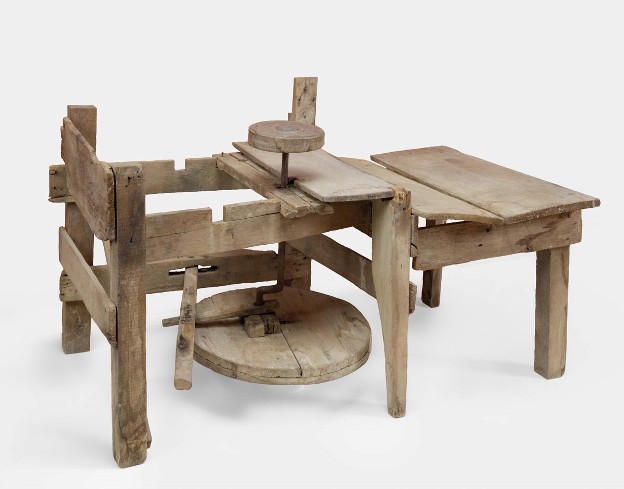Hervey Brooks was an American potter and farmer who made red earthenware domestic products in Goshen for more than half a century. Brooks’s goods, now valuable antiques, served an important purpose in 19th-century New England. They provided domestic wares for an isolated countryside and contributed to an informal system of sales, barter, and trade that characterized the rural economy of the period. While few records of this trade exist, Brooks left behind extensive documentation of his business transactions and daily responsibilities that provide historians a unique look at the life of a 19th-century farmer-potter.
Brooks came to Goshen in 1795 at the age of 16 and apprenticed himself in order to learn the potter’s craft. Spending his early career working largely for other craftsmen, Brooks struck out on his own in 1819. He built a pottery shop alongside his home, where he crafted 26 different varieties of bowls, jugs, pitchers, and platters that he then sold or exchanged with neighbors for goods and services.
The life of a farmer-potter meant that Brooks did not have the luxury of spending all his time perfecting his craft. In fact, from 1828 to 1864, Brooks only fired his kiln one day per year because life on the farm also involved sawing lumber, blacksmithing, carpentry, and a host of other responsibilities that kept him from his pottery.
Goshen Potter’s Shop and Craft Lives on in Outdoor Museum
Throughout the middle of the 19th century, tin goods became increasingly popular in New England and challenged the market for red earthenware products. In addition, the population around Goshen steadily declined, decreasing the demand for the goods of local potters. Brooks’s business managed to survive longer than most in the area but eventually met the same fate as the others. Brooks last fired his kiln in 1864.
When Hervey Brooks passed away in 1873, he left behind account books and daybooks (a journal in which daily transactions were recorded, often for later transfer to an accounting ledger). He also left a largely intact manufacturing facility that provided archaeologists with new insight into the tools, materials, and processes that went into making redware products. As a result, in 1961, the Old Sturbridge Village heritage site moved Brooks’s shop to their property in Massachusetts. They restored the building and began recreating Brooks’s processes in 1962. Seventeen years later, they finished building a working replica of Brooks’s kiln, and since that time have been offering visitors a unique opportunity to watch live demonstrations of 19th-century pottery manufacturing.










